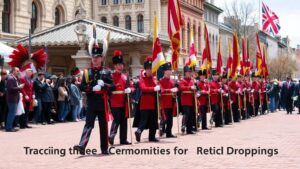How to Decode Treasure Maps Found in Old Manuscripts
How to Decode Treasure Maps Found in Old Manuscripts
Treasure maps have fascinated explorers, historians, and the general public alike for centuries. They are often shrouded in mystery, suggesting locations of hidden riches from the past. This article aims to explore the methodologies employed in decoding these maps, particularly those found in old manuscripts, highlighting historical significance, techniques, and challenges involved in the process.
Historical Background of Treasure Maps
The tradition of treasure maps dates back to at least the 16th century. One notable example is the treasure map attributed to Captain William Kidd, a notorious pirate whose exploits became legendary during the Golden Age of Piracy (circa 1650-1720). Unfortunately, authentic treasure maps have become rare, and many of the existing maps are often later reproductions or fictional creations.
In literature, Robert Louis Stevensons Treasure Island, published in 1883, popularized the image of the treasure map as a crucial tool for finding buried fortunes. The illustrations accompanying the narrative have heavily influenced public perceptions of what a treasure map should look like, leading to a culture steeped in myth and intrigue.
Types of Manuscripts and Maps
- Hand-Drawn Maps: Often created by explorers or traders, these maps may include rudimentary drawings and annotations based on oral traditions and local knowledge.
- Printed Maps: From the late 18th century onward, printed maps began to appear, often offering a more standardized representation of geography, though they may still conceal hidden symbols.
- Latitude and Longitude Grids: Maps that utilize a coordinate system can provide more precise locations, yet they also demand a greater understanding of cartography.
Key Techniques in Decoding Treasure Maps
Decoding a treasure map involves several critical steps, blending historical context, cartographic analysis, and sometimes even cryptographic skills. Here are some essential techniques:
- Historical Contextualization: Understanding the time period in which the map was created is vital. For example, maps from the Spanish Colonial period may use symbols and language relevant to that era, impacting how locations are identified.
- Symbol Analysis: Many maps contain symbols that were commonly understood at the time but may be obscure now. For example, a hidden cave may be represented by an icon resembling a funnel or a cryptically drawn tree. Researchers must cross-reference these symbols with other maps or historical documents.
- Geographical Correlation: Accurate decoding requires correlating map features with modern geography. Utilizing tools such as geographic information systems (GIS) can offer insights into ancient landscapes and land usage that no longer exist.
Challenges in Decoding
Decoding treasure maps presents several challenges. One significant issue is the deterioration of old manuscripts. Over time, paper can fade, making text and illustrations illegible. For example, a manuscript from the 17th century may show signs of ink degradation, hampering translation efforts.
Also, many maps include coded language or numerals that require decipherment. For example, the use of numerals to indicate distance–commonly, 1 might mean a mile, while 2 might indicate two miles–demands a robust understanding of the creators intent.
Real-World Applications
Successfully decoding a treasure map can lead to significant archaeological discoveries. In 1998, a treasure map attributed to Francis Drake


